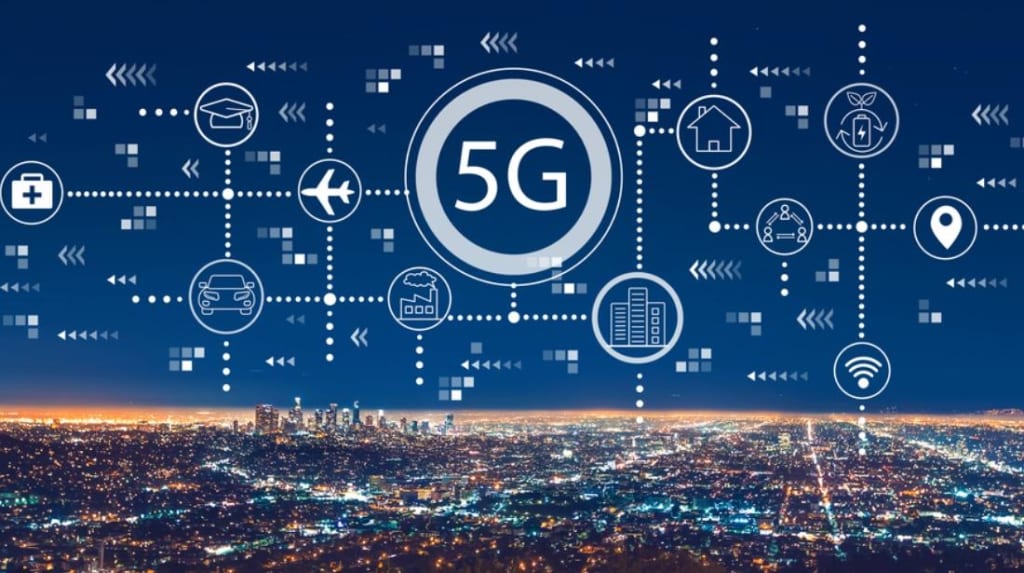Unlocking the Next Generation of Connectivity
5G Technology

The evolution of wireless communication has been a remarkable journey, from the first-generation (1G) analog cellular networks to the fourth-generation (4G) long-term evolution (LTE) technology. Today, we stand on the brink of another groundbreaking advancement with the fifth-generation (5G) technology. 5G is not just an incremental upgrade; it represents a fundamental shift in connectivity that promises to revolutionize how we live, work, and interact with the world around us. In this article, we will explore the concept of 5G technology, its underlying features, potential applications, and the far-reaching implications it holds for various sectors and society as a whole.
Understanding 5G Technology
At its core, 5G technology is the fifth generation of mobile network connectivity, designed to deliver significantly faster data speeds, lower latency, increased capacity, and improved reliability compared to its predecessors. While 4G paved the way for mobile internet and transformed the way we use smartphones, 5G aims to enable the seamless integration of multiple industries and technologies through ultra-high-speed wireless communication.
Key Features of 5G Technology
Enhanced Data Speeds: 5G is expected to provide data speeds of up to 10 gigabits per second (Gbps), which is around 100 times faster than 4G. This blazing speed ensures quick downloads, smooth video streaming, and improved online experiences.
Low Latency: Latency refers to the time it takes for data to travel from the source to the destination. 5G aims to reduce latency to as low as 1 millisecond, enabling real-time interactions and critical applications such as autonomous vehicles and remote surgeries.
Increased Capacity: With a more efficient use of the available spectrum, 5G can accommodate a significantly higher number of connected devices in a given area, paving the way for the Internet of Things (IoT) to thrive.
Network Slicing: 5G introduces network slicing, allowing operators to create virtual, independent networks tailored to specific use cases, such as industrial automation, healthcare, or entertainment. This flexibility ensures that each sector gets the required performance without affecting others.
Applications and Potential Use Cases of 5G
Internet of Things (IoT): 5G's increased capacity and low latency are pivotal for the growth of IoT devices and applications. Connected smart homes, smart cities, industrial IoT, and wearable technology will become more efficient and widespread.
Autonomous Vehicles: The low latency of 5G enables real-time communication between vehicles and infrastructure, enhancing the safety and efficiency of autonomous driving systems.
Healthcare: 5G can revolutionize telemedicine, enabling high-definition video consultations, remote surgeries, and real-time patient monitoring with reliable connections.
Smart Cities: 5G's capabilities can power intelligent transportation systems, smart grids, and various other applications, making cities more efficient, sustainable, and connected.
Augmented and Virtual Reality: 5G's high-speed and low latency are critical for delivering seamless AR and VR experiences, enhancing gaming, education, training, and entertainment.
Industrial Automation: 5G's reliability and ability to handle massive machine-to-machine communication can transform industries with efficient and responsive automation processes.
Education and E-Learning: With 5G, students can access high-quality educational content and participate in interactive virtual classrooms from anywhere, fostering a more inclusive and personalized learning experience.
Entertainment and Media: The entertainment industry can leverage 5G to deliver high-resolution content, live streaming, and augmented reality experiences to audiences with minimal delays.
Challenges and Considerations
As with any revolutionary technology, 5G comes with its own set of challenges that need to be addressed:
Infrastructure Investment: The deployment of 5G requires substantial investment in upgrading existing infrastructure and building new base stations to ensure comprehensive coverage.
Spectrum Allocation: To deliver optimal performance, governments and regulatory bodies need to allocate sufficient and suitable frequency bands for 5G use.
Security and Privacy: As more devices connect to the 5G network, the risk of cyber threats and data breaches increases. Ensuring robust security measures is crucial for widespread adoption.
Environmental Concerns: The increase in the number of base stations and devices may raise concerns about energy consumption and environmental impact.
The Societal Impact of 5G Technology
The widespread adoption of 5G technology is expected to have a profound impact on various aspects of society:
Economic Growth: The deployment of 5G networks will fuel innovation and create new opportunities, leading to economic growth and job creation in various sectors.
Digital Divide: While 5G promises enhanced connectivity, the digital divide may widen if access to this technology remains limited in certain regions or socio-economic groups.
Data Privacy and Ethics: The massive amount of data generated by 5G-connected devices raises important ethical questions about data privacy, usage, and ownership.
Healthcare Advancements: 5G's low latency and high reliability can improve remote healthcare services, enabling timely medical interventions and reducing the burden on healthcare facilities.
Environmental Sustainability: As industries adopt 5G-enabled technologies, efficiency gains and optimized processes can contribute to environmental sustainability efforts.
5G technology represents a monumental leap in wireless communication, offering unprecedented data speeds, low latency, and increased capacity. As 5G networks continue to expand and mature, the way we live and interact with the world will undergo profound transformations. From powering smart cities and autonomous vehicles to revolutionizing healthcare and education, the potential applications of 5G are vast and far-reaching. However, addressing the challenges related to infrastructure, security, and privacy will be essential to ensure that 5G's benefits are accessible to all while safeguarding individual rights and societal well-being. As we embrace this next generation of connectivity responsibly, 5G has the potential to unlock a new era of innovation, connectivity, and progress for humanity.
About the Creator
Reynol Brennan
A small blogger who shares emotions, life, life insights, and short stories, and provides everyone with happiness, growth, and common sense of life.
Enjoyed the story? Support the Creator.
Subscribe for free to receive all their stories in your feed. You could also pledge your support or give them a one-off tip, letting them know you appreciate their work.






Comments
There are no comments for this story
Be the first to respond and start the conversation.